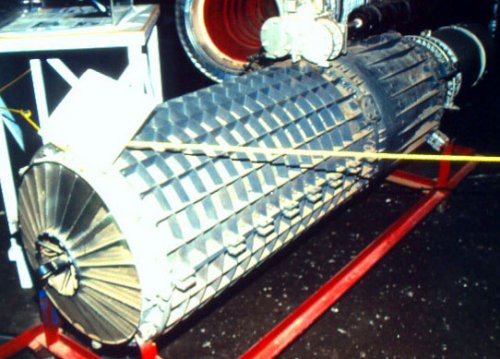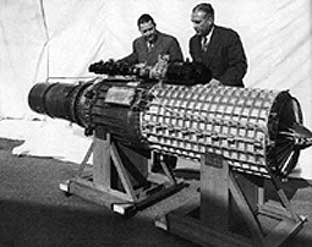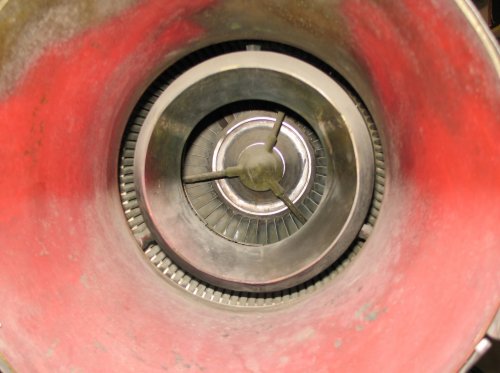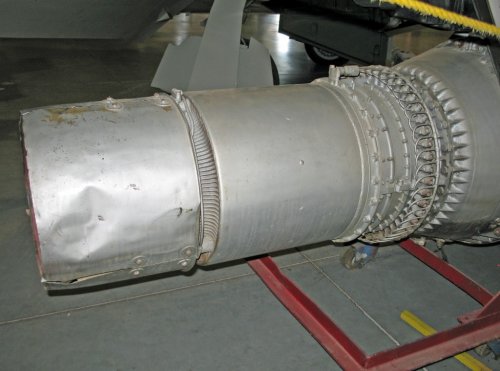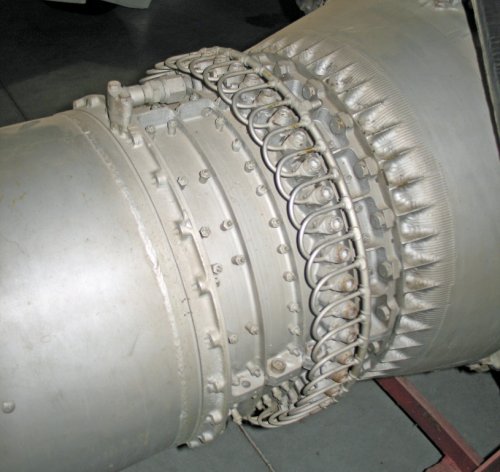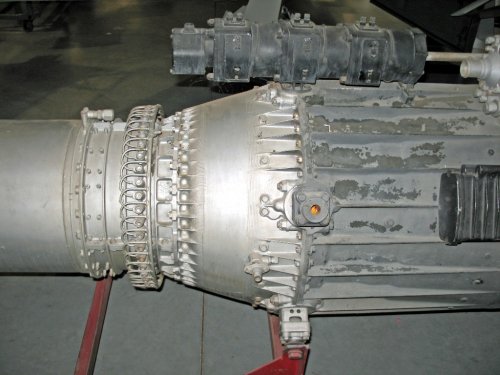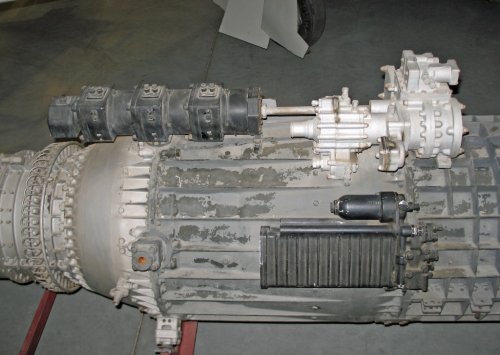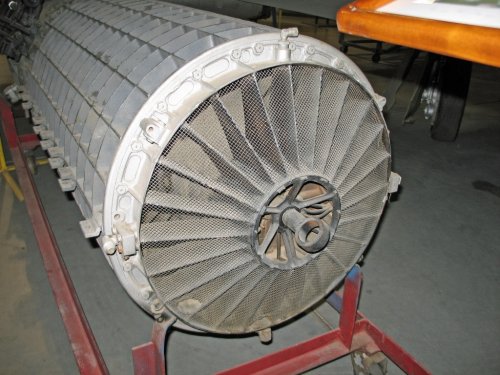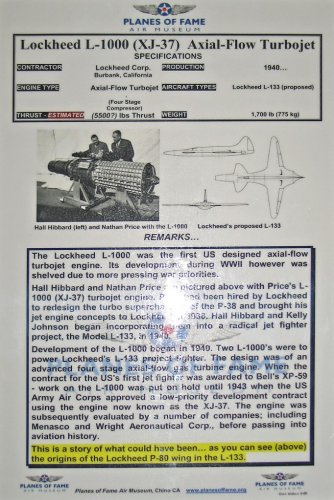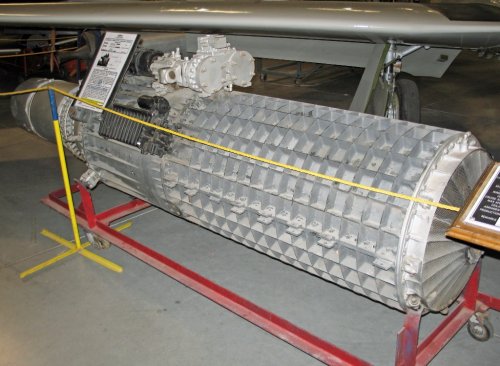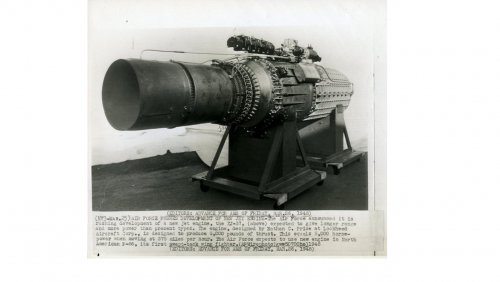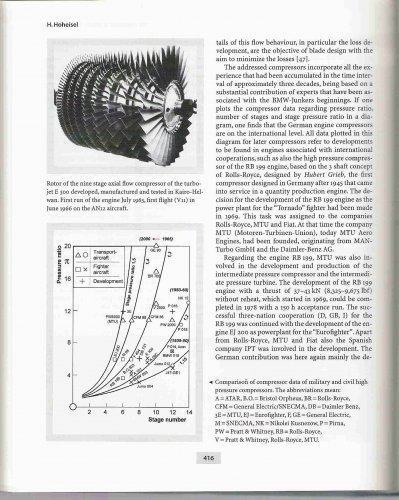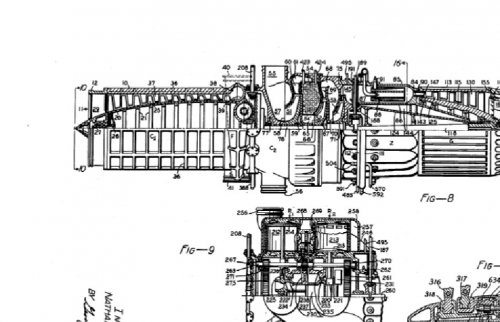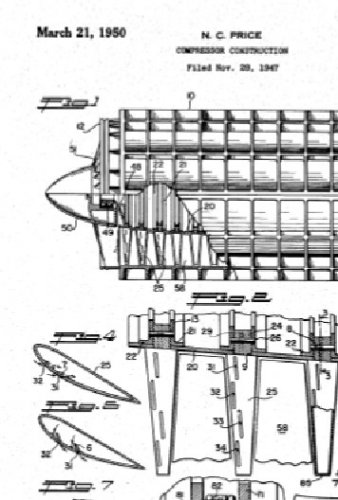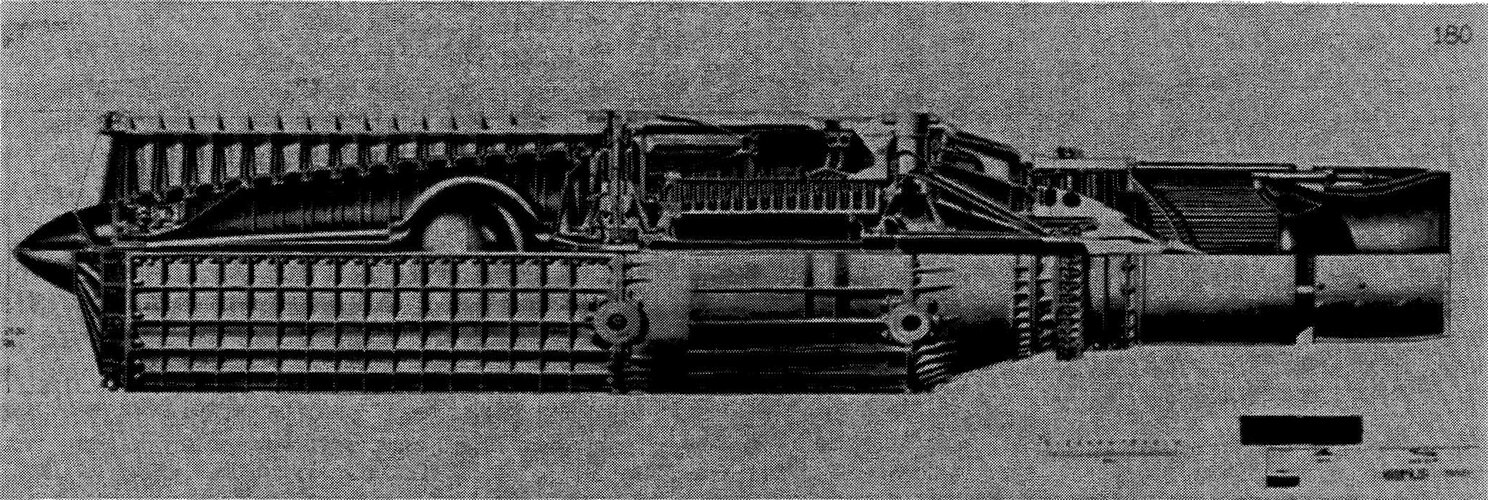aim9xray
That's a good observation. The best way to get to ground truth would be to split the case and count the stages, but I don't think that Mr. Maloney would let us do that to his exhibit.
Curators get so bent out of shape over that... *laughs*
Let's attack this by analogy. What was the state of the art at the time and for some years after?
During the early 1940's there weren't many axial flow engines out there. These engines would include the BMW 003 (1940), Jumo 004 (1940), (possibly the HeS 8 and 11), the Metropolitan F.2/4 Beryl (1941), the Metropolitan Vickers F.3 (Turbofan technically).
There are certainly others that were run...
Go find the number of compressor stages for the following engines and report back. (also note thrust and compression ratio)
Wilco...
Avon: 15-stage axial; 12,690 lb thrust; 7.45:1 (PR)
Sapphire/J-65: 13-stage axial; 7,239 lbf; 7:1 (PR)
J30: 6-stage axial; 1,600 lbf; 3:1
J34: 11-stage axial; 3,400 lbf; 4.35:1
J35: 11-stage axial; 5,600 lbf; 5.5:1
J40: 10-stage axial; 7,500 lbf; 5.2:1
J47: 12-stage axial; 5,800 lbf; 5.5:1
J79: 17-stage axial; 11,905 lbf; 13.5:1
Well, I was being a bit generic in my description. To be technical, those would be "AN" standard aviation fluid fittings - but why do you think that they would pump a fluid through the engine front frame? (Hint: take a close look at Tartle's photo.)
The tubing flows through a structure in the middle of the engine which might be the intercooler that was mentioned; it then flows through to the afterburner in three locations which appear to include the fuel injectors and two other spots.

